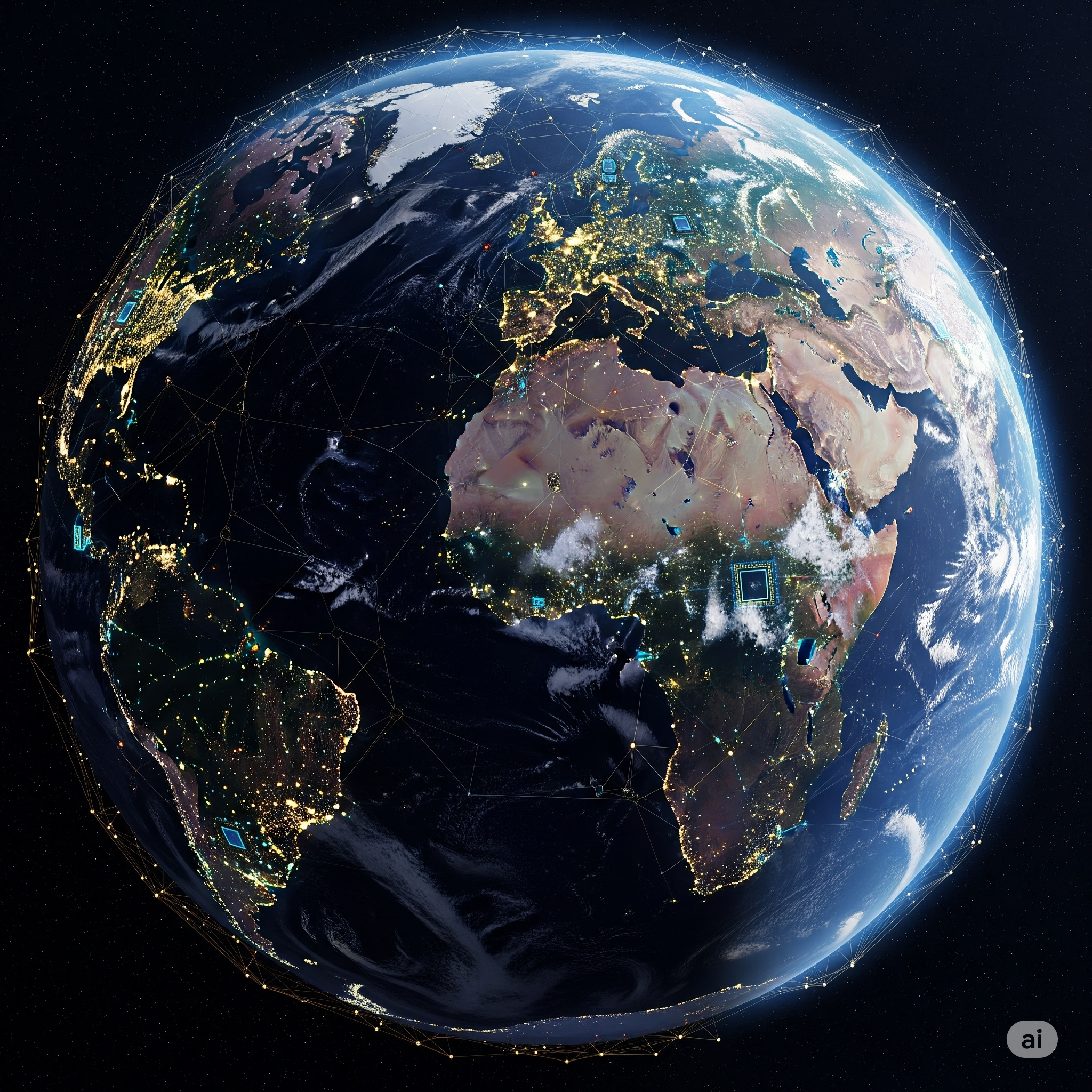Can AI Go Mainstream by 2035? Risks from Chips & Conflict
Most of you don’t know this, but my other hobby is geopolitics.
And lately, I’ve been seeing a major blind spot in the AI conversation.
Everywhere you look, people are betting on AI:
OpenAI, Google, Meta, governments, investors — all working off the same assumption:
That AI’s rise is inevitable.
But what if it isn’t?
What if, despite the breakthroughs, the demos, and the hype… AI never becomes truly mainstream — not because the tech fails, but because the world around it does?
Let’s talk about three very real-world threats that could block AI from becoming a ubiquitous part of life by 2035.
📉 1. Demographic Collapse in Chip-Producing Nations
AI doesn’t run on magic — it runs on semiconductors. And semiconductors run on people: engineers, factory workers, researchers, and technicians.
Here’s the problem: some of the most critical countries in the chip supply chain — Taiwan, South Korea, Japan, and China — are all facing severe population decline.
- Taiwan’s fertility rate is below 0.9, and its working-age population is shrinking fast.
- South Korea’s fertility rate is 0.72 — the lowest in the world.
- China’s population is now in irreversible decline.
These countries don’t just need labor — they need high-skill, precision-trained labor to keep chip fabs running. That kind of workforce doesn’t just appear. It takes decades of education, infrastructure, and demographic stability to build.
Peter Zeihan, a geopolitical analyst, puts it simply:
“No people = no production.”
And if you don’t have production? You don’t have chips.
And if you don’t have chips? You don’t have AI.
🌐 2. The Semiconductor Supply Chain Is Dangerously Fragile
Even if population weren’t a problem, we’d still have to deal with the fact that building an AI chip is one of the most complex feats of global coordination ever attempted.
It takes over 80 countries to make a single high-end chip.
- Design in the U.S. or U.K.
- Rare earth mining in Africa or Southeast Asia
- Lithography tools from the Netherlands (ASML)
- Packaging & testing in Vietnam or Malaysia
- Fabrication — the actual chipmaking — happens almost entirely in Taiwan and South Korea
This is not a robust system. It’s a miracle held together by just-in-time shipping and fragile peace.
If even one major node in this chain fails, the entire AI pipeline chokes.
🧨 3. The Taiwan Flashpoint: One Island, 90% of the World’s AI Chips
Here’s the biggest risk most people don’t want to talk about:
Taiwan produces over 90% of the world’s most advanced AI chips.
Not just any chips — but the 3nm and 5nm node chips that power models like GPT-4, Claude, Gemini, and the next wave of AI development.
If China invades Taiwan — a scenario that’s looking less hypothetical every year — there is a very real possibility that:
- TSMC fabs are destroyed or disabled
- U.S. and Taiwanese officials have openly said sabotage would be on the table to prevent China from gaining access.
- ASML and other suppliers remote-disable equipment
- Some reports suggest “kill switches” already exist.
- The global AI compute economy crashes for years
- Training stops. Prices explode. Access dries up.
Even with new fabs being built in the U.S. (Intel, TSMC Arizona), you can’t replace Taiwan’s chip capacity overnight. Talent, tooling, and production volume take 5–10 years to rebuild at scale.
🎲 So What Are the Odds AI Doesn’t Go Mainstream?
If we take a sober look at all these factors — demographic decline, global supply chain fragility, and the risk of war in Taiwan — here’s how it shakes out:
| Scenario | Risk AI Fails to Go Mainstream |
|---|---|
| Demographics + supply fragility | 20–30% |
| Full-blown China–Taiwan conflict | 60–70% |
And even if AI doesn’t fail outright, it could become highly stratified:
- Mega-corps and governments keep access to frontier models
- Small developers and the public lose access to new compute
- AI shifts from a global utility to a strategic national asset
This isn’t science fiction. This is a strategic blind spot.
🧭 Conclusion: The Future of AI Depends on More Than Just Algorithms
If you believe AI will shape the future — of work, creativity, science, governance — then it’s time to start paying attention to the infrastructure, labor, and geopolitics it rests on.
It’s not enough to just build better models.
We need to build a more resilient world that can actually support them.
Because right now?
The chips are on the table. And the table is on fire.


Leave a Reply
Want to join the discussion?Feel free to contribute!